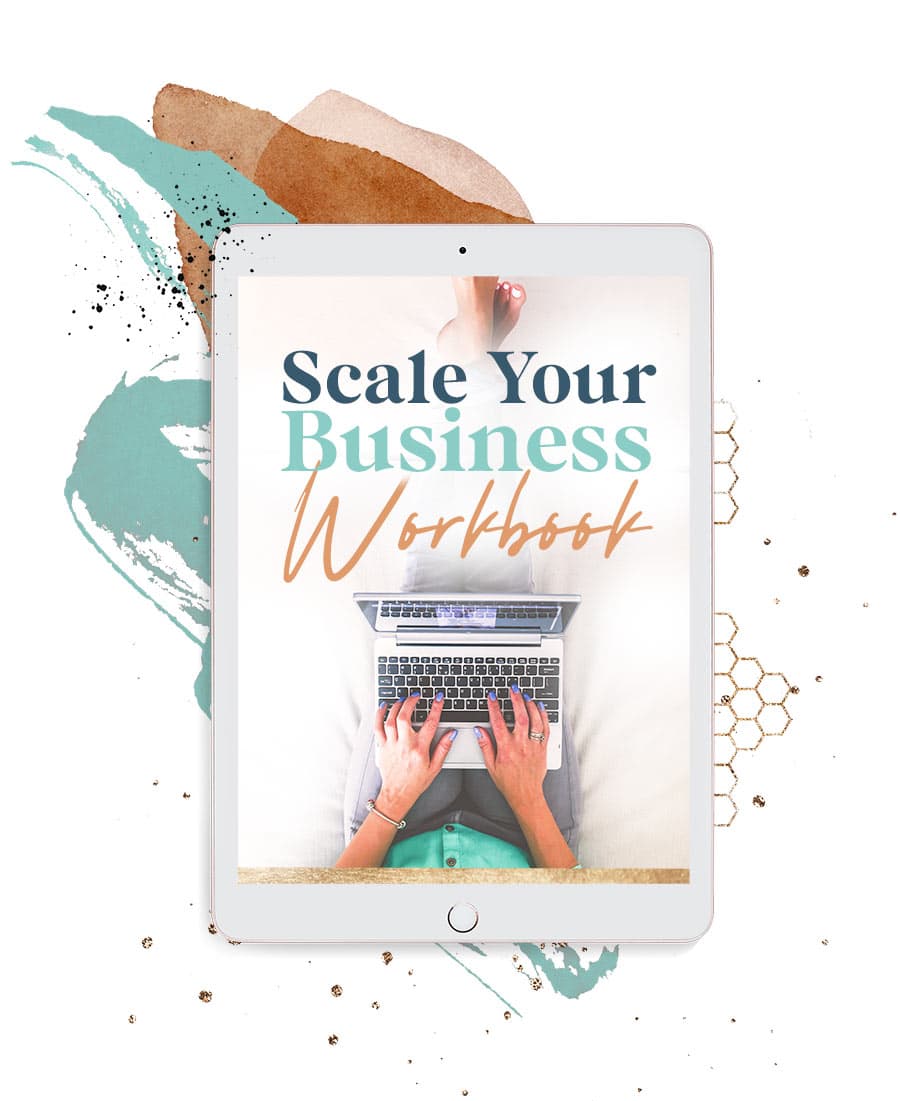Want to build your list, give value, become the “go-to” in your niche and collab with cool people on a similar mission, all at the same time–and maaaaybe even stash a little extra cash, too?
Then a bundle might be just what your online business needs.
Bundles are popping up all over the place these days – I can barely open my inbox without seeing a new one! – but basically, a bundle is a free or paid offer made up of contributions from other entrepreneurs on one relevant topic. And it makes sense why so many online biz owners love them: They’re more cost-effective than Facebook ads, faster than waiting for a TikTok to go viral and simpler than putting together another list-building fan fave (the online summit).
Whether you need a straight-up revenue bump, want to network within your niche (or pivot into a new arena) or simply want to grow your list big time, bundles are where it’s at.
If you’ve ever pondered hosting your own bundle but don’t know where to start, allow me to break it down for you. Here’s an abridged step-by-step guide to help you host your very own high-converting bundle:
1) Identify Your Target Audience and Theme
First, determine the bundle’s target audience. What are their needs, problems and pain points? What are their ultimate dreams and goals? What do they desire?
A clear target audience will help you select a theme, a bundle name and choose the right entrepreneurs and offers to include in said bundle. It’s the basis of the entire operation, basically.
And side note: You don’t have to create your bundle on your current area of expertise. In fact, you can use bundles as a way to pivot into a new niche – or try out a product in a different category. For example, if people know you as an email copywriter but you’re ready to become the sales funnel expert, you can create an entire bundle around sales funnels. You’ll get to network with people in the sales funnel space, grow your list and ‘get known’ as a sales funnel expert to an entirely new audience–all in one go.
2) Decide on Bundle Logistics
You can set up a bundle a few different ways–and how you choose to structure yours will depend on your business (and revenue) goals. Here are a few ideas:
– Free bundles. Free bundles require visitors to sign up with their email address to get access to a variety of free resources–usually small digital products or courses–from the bundle contributors. There’s no upfront cost for the bundle, and each person who signs up either has to enter their email address or use a coupon code to receive the free offer(s) they want.
– Paid bundles. Paid bundles are also an option. In this case, you’d charge a nominal fee for your bundle, usually between $25 and $97. The rest of the process remains the same.
– Free bundle with a tripwire. You can also offer a free bundle where the visitors will receive loads of free resources, but also have the option to snag a limited-time-only tripwire or upsell. For example, the free bundle tripwire might be access to an exclusive resource, Q&A call or even more valuable resources from the same (or more well-known) creators.
Once you know what bundle you want to create, it’s time to think about whether you’re going to share the email addresses you acquire with the other bundle participants. There are pros and cons to each option–and it depends on your overall bundle goals.
Be sure to think about what types of resources you’d like to include in your bundle, too. For example, can participants offer discount codes or gift cards for their products, or do they need to provide access to a full product? These are all important questions to answer before digging in further.
3) Set Your Bundle Dates
One of the best parts of hosting a bundle? It comes with built-in urgency. Bundles are only available for a limited time, which encourages potential customers to act quickly to snag the resources or discounted rates.
Some bundles are open for a few days, and others run for a few weeks. Pick a timeframe and just be sure to stick to it.
You’ll need an open cart date, a close cart date and depending on how you structure your bundle, you might also need to decide on a final date for downloading or accessing the resources they desire.
4) Research & Reach Out to Potential Bundle Partners
Now that you have the three most essential & foundational ingredients of a successful bundle on lock, it’s time to move onto the next phase: Choosing the right bundle partners. You’ll want to be discerning about who you include in your bundle. Start by identifying like-minded entrepreneurs whose products or services complement the theme of your bundle. Do a little digging and research their offers to ensure they provide high-quality and relevant solutions to your target audience’s problems. (A quick Google search should let you know if they’re legit!)
Once you’re sure someone would be a fantastic fit, start reaching out to potential partners and explaining your bundle offer concept. Create a templated email or a simple web page that explains what your bundle is, who it’s for and the benefits of the collaboration for the participants – like exposure to a new audience and increased sales potential.
If you already have potential partners in your own audience, you can also send off a “call for contributors” to your email list or social media.
5) Negotiate Terms and Agreements (Including Payment, Promotion and Email Address Exchange)
In order to hit your bundle goals, it’s super important your bundle participants know exactly what’s expected of them.
Bundles are usually an easy yes for most entrepreneurs. Like I mentioned, they’re less time-consuming than participating in a summit and usually involve including an product or offer they’re already created, so there’s no need to build something new from scratch (unless they want to) – so you’ll likely get a lot of enthusiastic yeses right off the bat.
That said, it’s important to discuss the terms of collaboration with your potential partners before any contracts are signed.
Determine how revenue will be shared (if applicable) and any promotional obligations, including what you require from them to participate (like 2 solo emails to their email list, or daily social media posts on their most popular platforms). You can also provide swipe copy or templates to help them promote–or not! How much or little marketing support you provide is totally up to you.
In addition, you’ll want to be very clear about when you need their actual bundle contribution. Be sure to set a clear date for when they need to submit their materials and any perimeters for said materials (i.e., “This offer should not be for sale elsewhere at the time of the bundle promotion”). Get this, as well as any payment or payout information, email sharing information and any other relevant terms in a formal agreement to avoid misunderstandings later.
6) Set Up Your Systems for Seamless Delivery
You’ll need a few basic tech pieces set up to successfully – and seamlessly – offer your bundle.
Here’s a quick snapshot of what you’ll need to create and test:
– Bundle Contributor Information Page, where you list all the details about the bundle for potential contributors. This could include everything we talked about in the last step.
– Bundle Landing Page (This can be a general page if you’re setting up a waitlist) Build a dedicated landing page for your bundle offer. Include compelling copy that highlights the value of the bundled products or services. List each contributor’s offering with a brief description and an image. Clearly communicate the overall price and the savings customers will receive by purchasing the bundle.
– Bundle Offers Page, where you’ll ‘house’ the offers that are available as part of the bundle. The way this looks will vary depending on your bundle ‘type’
– Email Sequence that provides clear instructions on how to access or receive each component of the bundle
– Additional Payment and Product Delivery Systems, whether that’s an e-commerce platform, sales funnel tool, or even a third-party marketplace. The goal is to ensure the payment process is smooth and secure, and that everyone gets paid easily (including the contributors, if applicable)
– Customer service or technical support to provide help and guidance to bundle purchasers and/or contributors. Who will provide tech support – and how can bundle buyers access it?
7) Market and Promote Your Bundle
One of the biggest benefits of bundle is the amount of new audience members you can reach relatively quickly. For example, if you have 20 contributors with 1k subscribers each, that’s 20,000 new people seeing your stuff.
But your partners shouldn’t be out there promoting your bundle all on their own – you’ll also need to come up with your own marketing plan, too. You can use your usual marketing channels – social media, email marketing, blog posts, etc. – or set up special events like webinars, Lives or Q&As.
No matter where and how you choose to market your bundle, be sure you’re highlighting the value of the bundle and speaking to your audience’s pain points and desire, as always.
And there you have it! Hosting a bundle offer that includes a variety of offers from other entrepreneurs is a fun, easy and fairly painless way to grow your list and leads – and make lots of connections and even a little cash, if that’s how you choose to set it up.







